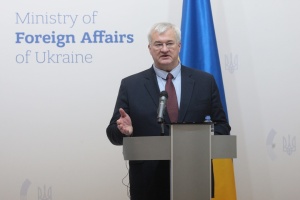
Ukraine plans to achieve climate neutrality by 2050 - Rada passes framework law
The Ministry of Environmental Protection and Natural Resources reported this via Telegram, Ukrinform saw.
The document saw support of 284 MPs.
"In the law, we set the goal of achieving climate neutrality by 2050. And we also determined Ukraine’s climate governance architecture, financial instruments for achieving climate goals, and took into account the goals of the state climate policy in the post-war recovery programs," emphasized the Minister of Environmental Protection and Natural Resources, Svitlana Hrynchuk.
Thus, the European integration framework legislation defines strategic planning and practical steps in achieving climate neutrality, introduces cross-sectoral climate policy, initiates monitoring of efforts and steps to implement climate policy, and systematic forecasting in the field of climate change.
According to the minister, with this law, Ukraine is bringing its legislation even closer to the EU Acquis communautaire. This is another argument in the negotiation process that Ukraine is ready to join the EU and fulfills the conditions for receiving financial assistance within the Ukraine Facility.
As reported, Ukraine is working on an emissions trading strategy – the draft law on the Carbon Emission Trading system will finalized before year-end. In 2025, the CET "test" mode will be presented, and the tool will be fully operational from 2026, which will allow Ukraine to join the European CET.
As is known, the European Green Deal is a road map aimed to transform Europe into the world's first climate-neutral continent by 2050. At the same time, the course should stimulate economic development, improve people's health and quality of life.
The Green Deal was officially presented by European Commission President Ursula von der Leyen in the European Parliament on December 11, 2019. Its key areas include green energy, climate action, construction and renovation, sustainable industry, sustainable mobility, reduction of environmental pollution, biodiversity, and sustainable agricultural policy.




